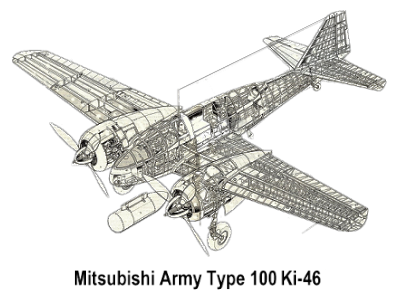The Mitsubishi Ki-46 was a twin-engine reconnaissance aircraft used by the Imperial Japanese Army in World War II. Its Army Shiki designation was Type 100 Command Reconnaissance Aircraft, the Allied nickname was 'Dinah'
Development
The Ki-46 was designed to replace the Mitsubishi Ki-15 'Babs', a reconnaissance aircraft that entered service in May 1937. Although the Ki-15 was a successful design it was already clear that it was not fast enough to elude the new generation of monoplane fighters, and so in 1937 officers from the Technical Branch of the Koku Hombu (Japanese Air Army HQ) began work on a specification for a replacement. Tomio Kubo, the chief designer of the Ki-46 designed a cantilever low-wing monoplane with retractable tailwheel landing gear, powered by two 671kW Mitsubishi Ha-21-l radial engines, the two-seat Ki-46 prototype was flown for the first time in late November 1939. Early testing showed that maximum speed of the Ki-46 was some 10% below specification, but as its speed and overall performance was better than in-service army and navy aircraft the type was ordered into production.
Back to Top
In Action
By July 1941, the 50th, 70th, 74th and 76th Dokuritsu Dai Shijugo Chutais (Independent Squadrons) in Manchuria and the 51st D.D.S.C. in China were receiving examples of the new Ki-46-II. Eventually they just about every front in the Pacific, operating in small numbers. A small number were taken over by the Navy, and operated as far south as Northern Australian from bases on Timor, while Army aircraft reached the Bay of Bengal. As the war progressed, it was used over Burma, Indochina and Thailand, and in operations over the Indian Ocean. In 1944-45, during the last days of the war, it was modified as a high-altitude interceptor, with two 20 mm cannons in the nose and one 37 mm (1.46 in) cannon in an "upwards-and-forwards" position. They were a disappointment in combat, lacking the rate of climb needed to reach the B-29s, while the unprotected fuel tanks made it very vulnerable to the firepower of the American bombers.
Variants
The improved Ki-46-ll had 805kW Mitsubishi Ha-102 engines, this powerplant giving a maximum speed slightly in excess of the original specification.was the major production version, with more than 1,000 built. A number of were converted later into three-seat radio/navigation trainers under the designation Ki-46-ll KAI. Due to unacceptably high losses of Ki-46-IIs, newer variants included the faster and improved Ki-46-III of which 609 were built. The Ki-46-III was given a more powerful engine and a revised canopy. Gone was the traditional stepped windshield and instead a smooth, curved, glazed panel extended over the pilot's seat (the only piece of armor plate in the whole aircraft), and gave the Ki46 an aerodynamic nose. The faulty undercarriage was strengthened to carry the hefty fuel load (up from 367 to 417 imperial gallons). The whole fuel system was redesigned, with 5 unprotected tanks in each wing (included new leading edge tanks) and two enormous black rubber bag tanks, one between the pilot and the observer, and the other directly in front of the pilot's cockpit. It entered service during 1943 with a small number were converted later as Ki-46-lll KAI fighter interceptors and the Ki-46lllb ground-attack aircraft that was developed in March 1945. It was armed with two 20mm cannon, and entered service in small numbers as the Army Type 100 Assault Plane.
Production of all versions totalled 1,742, all built by Mitsubishi.
Back to Top
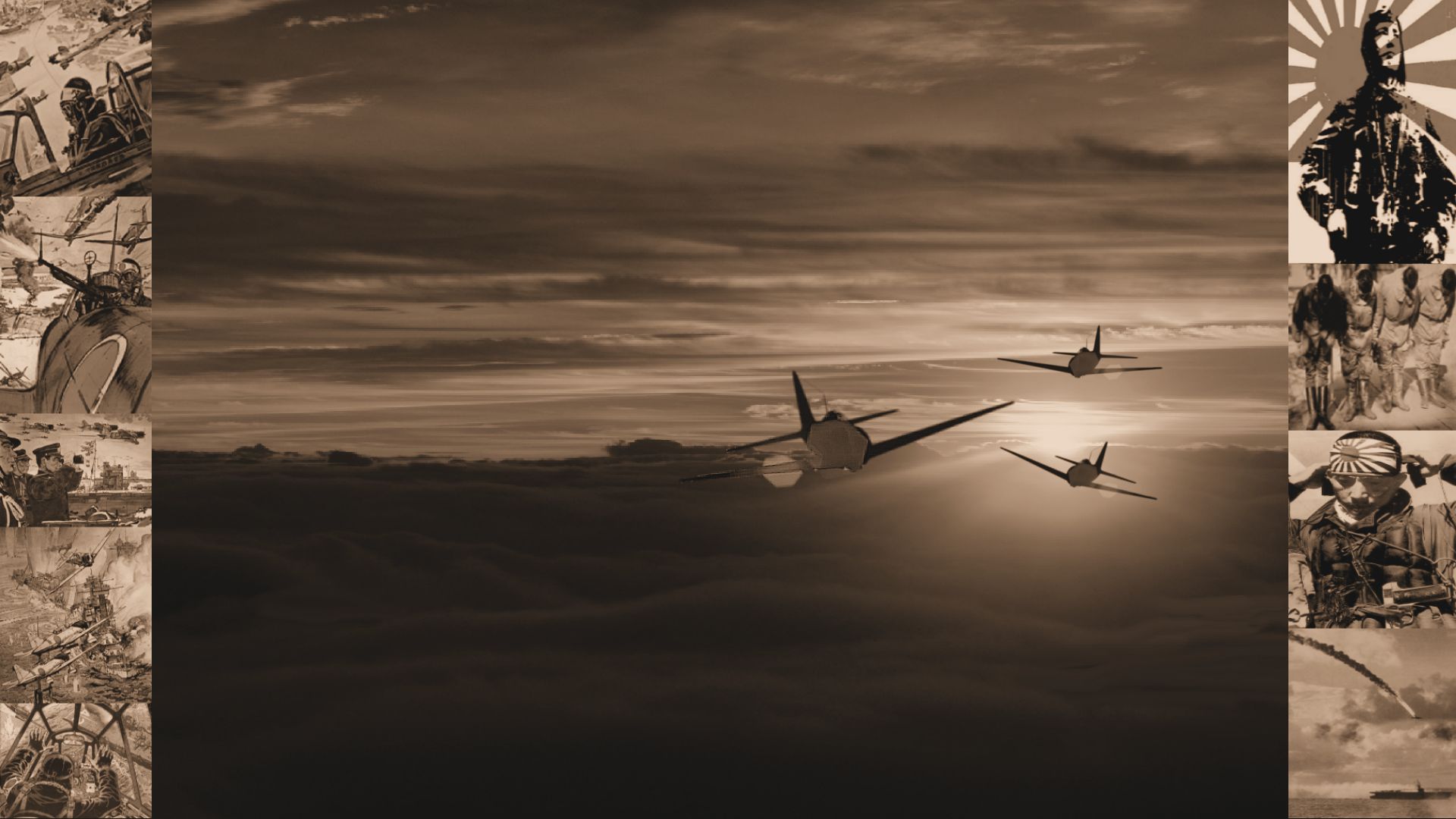



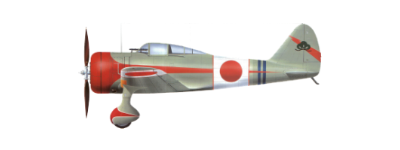 Ki-27
Ki-27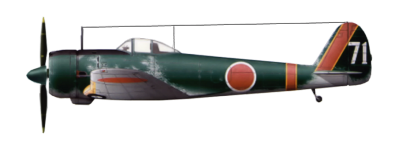 Ki-43 Hayabusa
Ki-43 Hayabusa Ki-44 Shoki
Ki-44 Shoki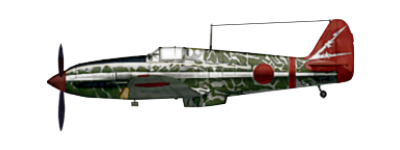 Ki-61 Hien
Ki-61 Hien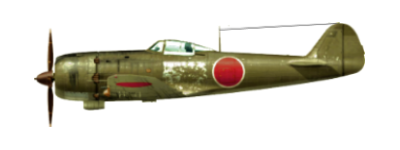 Ki-84 Hayate
Ki-84 Hayate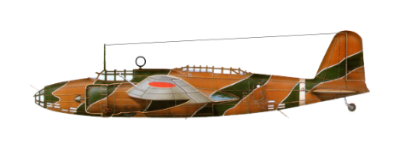 Ki-21
Ki-21 Ki-67 Hiryu
Ki-67 Hiryu
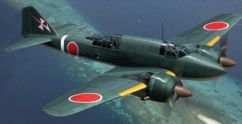

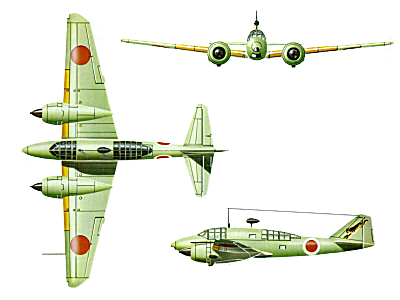
 Mitsubishi Ki-46
Mitsubishi Ki-46
